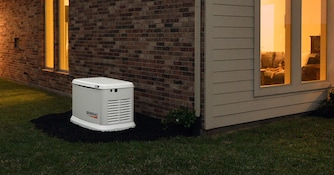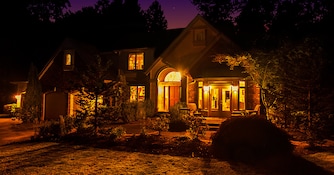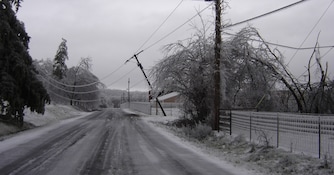
Home Standby Generator Buyer's Guide
With increasing power outages, pandemic shutdowns, and social unrest sweeping the country over the past few years, many Americans are embracing self-sufficiency, knowing, in the end, that they cannot count on anybody but themselves.
A home standby generator is the ultimate backup for your home if you value self-reliance and feel responsible for your family's safety in the event of a power outage caused by a natural or man-made event.
If you're new to standby generators, we'll help get you on the right track with information on everything from why they're important, to how they work, and how to get one.
Home Standby Generators vs Portable Generators
The difference between a standby generator and portable generator is pretty simple. Standby generators are hard-wired to your home and turn on automatically in the event of a power outage. Portable generators, although great in a pinch, aren't designed for longer-term power outages.
Here are some additional benefits provided by a standby generator.
- Safety - With standby generators, you don't have to mess with gasoline and power cords. As a result, there is a reduced risk of fire, CO poisoning, and electrical shock.
- Convenience - Home standby generators give you peace of mind, even when you're away. Power is automatically restored to critical systems like the A/C, water, fridge/freezer, or the entire house. Continue watching the game or working on your PC, like nothing ever happened.
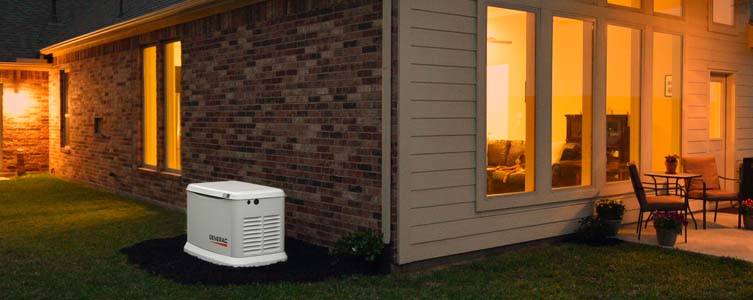
- Power - With higher wattage ranges, home standby generators can power more of your home for longer. The standby generators with the most power output are called whole-house generators because they could theoretically power your entire home if sized properly.
- Value - A standby generator is an investment that pays for itself every time the power goes out while simultaneously increasing the resale value of your home. It also delivers the cleanest power possible for sensitive electronics found in today's homes.
How to Pick a Standby Generator
When selecting a home standby generator, follow these important steps:
1. Pick a Fuel Source
The first step in selecting a good standby for your home starts with identifying the fuel type.
Standby generators up to 26kW will typically be either natural gas (NG) or liquid propane (LP), but if you're looking for a generator that runs on diesel, you'll need to step up to a liquid-cooled whole-house type that could cost considerably more.
Both LP and diesel fuels will require tanks large enough to properly run the generator. Similarly, the natural gas meter and gas lines will need to be the correct size.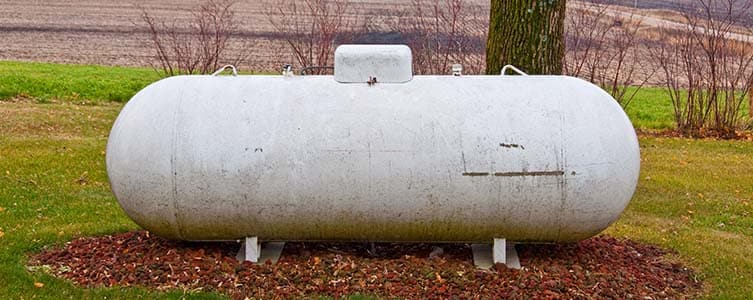
Prior to installation, your contractor will verify this with you, but you can find this information in the installation manual on our product pages.
2. Determine Power Needs
The next step is finding out how much power you'll actually need during an outage and whether or not you want to only back up crucial systems like refrigerators and air conditioning, or the entire house.
Power Ratings
Larger generators, such as home standbys, are rated by kilowatt (kW), which measures the generator's electrical power output. One kilowatt is equivalent to 1,000 watts or (1 kW = 1,000W).
The best way to determine your home's power needs is to first decide if you want to power your central air conditioner or HVAC equipment during a blackout since it will have one of the highest electricity demands.
Remember, during summer months, a sweltering blackout could make life miserable, and an ice storm in the winter could crash your holiday plans — leaving pipes susceptible to bursting. You should strongly consider backing up your heating and cooling system.
Sizing Your Standby Generator
So how can you tell what size generator you need? One method is to look at the air conditioning unit's data plate for the size in either BTUs or Tons. There are 12,000 BTUs for each ton of capacity and 3.517 Kilowatts of energy.
.jpg)
So, if you have a 3-ton (36,000BTU) air conditioner, for example, it will require a standby generator that is 11kW or larger.
To find the perfectly-sized generator that will meet the demands of your home and air conditioner, use our Standby Generator Calculator.
3. Choose a Transfer Switch
Just like a light bulb needs a switch to turn on, your generator needs one too.
An automatic transfer switch (ATS) allows your generator to automatically spring into action the moment a power failure is detected.
It does this by continuously sensing utility power and, after detecting an outage, it immediately starts the engine and disconnects power coming from the line to energize your home's panel through generator power.
Getting the right switch is just as crucial as getting the right generator, as they work together to restore lost power. In order to know which will work for you, you'll need to know the amperage of your electrical service panel. You can check this by locating the main breaker in your electrical panel (usually the big pull-out at the top). You can also ask your installer to verify this for you.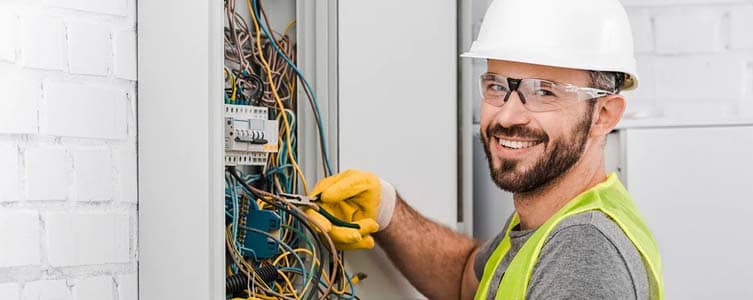
Typically, the average sized home has a 200-amp main breaker, so the maximum amount of electricity your home can consume is 200 amps. Smaller, older homes may have 100 to 150-amp service. It's very important to get the same amp switch as your home's panel.
Generator Remote Monitoring
Several manufacturers are now adding Wi-Fi options to their home standby generators. If you already have a standby that does not have Wi-Fi built in, you can install a wireless monitor to your existing standby generator.
Including WiFi and using a remote app (if available) can help integrate your generator with the rest of a smart home and give you diagnostics and control from your mobile device. Even if you're not home, you can check on your generator and the current power situation.
Where to Get a Standby Generator
Now that you know how to pick the perfect standby generator, you can backup your home with peace of mind.
Just don't wait until the last minute before a storm to order one. It takes time to get the necessary zoning permissions and professional installation. You won't get it done in a few days. In an extreme weather situation especially, installers might be severely backlogged.

The ongoing U.S. supply chain crisis is also impacting the availability of generators nationwide. Stay patient as you await your order as there is little any manufacturer can do so long as the broader economic environment remains the same.
So just plan ahead and you'll be fine. Imagine how great you'll feel once your home is protected against power outages of every kind.
You'll never worry about the power going out again!
Main | Essential Circuit Standby | Whole House Standby | Commercial Standby | Standby Sizing Calculator | Automatic Transfer Switches | Installation | Accessories


